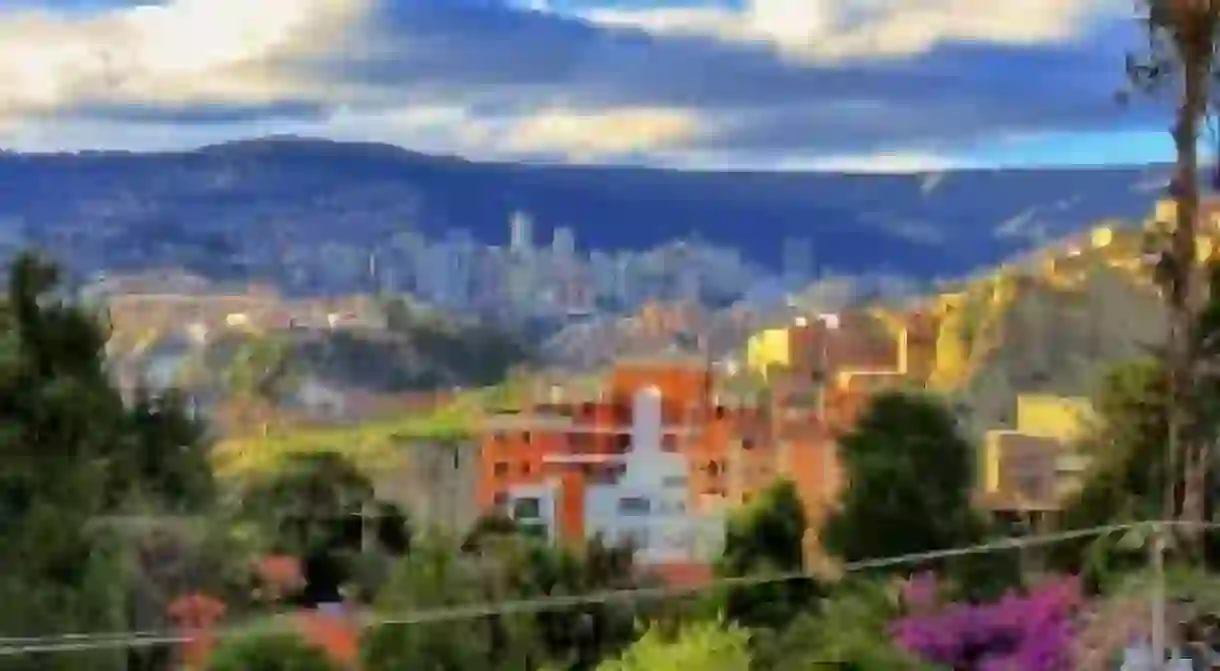The Best Contemporary Art Galleries In La Paz

During its complex history, Bolivia has seen Incan rule, colonial times and a long period of instability, from which it emerged victorious. Nowadays, artists in the Bolivian capital are aiming ever higher with their assertion of an independent arts scene in the world’s highest metropolis. Our guide to the best contemporary art galleries in La Paz will ensure that art lovers remain on the right cultural path.
Arte San Miguel (formerly Arte 21)
Arte San Miguel regularly invites paceños and tourists alike to exhibition openings, hosted up to once a month, and also opens its doors to local children who want to learn how to pick up a paintbrush. Renovation work in mid-2013 enlarged the artistic playground for up-and-coming Bolivian artists who have been stifled by the industry’s elitist attitudes. From collective exhibitions on street art, to the abstract works of Jaime Calizaya, Arte San Miguel welcomes a wide range of artists and media, making it a cultural orientation point in a country with 38 official languages.
Arte San Miguel, Calle Pankara 1002, Calle 21 & Avenida Montenegro, San Miguel, La Paz, Bolivia, +591 7072 0000
Museo Nacional de Arte Contemporánea Plaza
A little bit of Paris in La Paz may be surprising for this indigenous, mountainous enclave, but it is certainly an architectural feature in this centrally located gallery. Two floors of exhibition space filled with contemporary Bolivian pieces and one floor dedicated to the permanent collection, nestle in the splendid 19th century mansion designed by Gustave Eiffel. It may not be pioneering forward-thinking modern art, but the museum’s aim is to ferment a pedagogic atmosphere for the study and propagation of Bolivian art from the past 500 years. The Museo therefore displays a marked penchant for colonial studies and hybrid cultures, as opposed to untainted Amerindian artistry.
Museo Nacional de Arte Contemporánea Plaza, Avenida 16 de Julio No. 1698, La Paz, Bolivia, +591 2233 5905

Centro de Artes Mamani Mamani
Museum
Museo de Textiles Andinos Bolivianos (Museum Of Bolivian Textiles Of The Andes)
Museum
Salon Cecilio Guzman de Rojas
A small gallery with constantly changing exhibitions, ranging from watercolors to oil painting to mixed media, Salon Cecilio Guzman de Rojas showcases the current trends and tastes of Bolivian art. The gallery bears the name of a popular 1950s artist whose life and style still permeate contemporary art with an accent on indigenous ideas and colors.
Salon Cecilio Guzman de Rojas, Calle Colón Nº 279, La Paz, Bolivia
Salar
When asked what they know about Bolivia, most people are likely to say ‘salt plains’. The dazzling stretches of crystal-white plains and bright blue skies are a permanent feature of the country’s landscape. Now imagine that same clean, experimental and stimulating aesthetic transplanted into central La Paz, and revolving around open-space galleries and modern photography. Expect works by Gastón Ugalde, Scarlett Hooft Graafland and Sonia Falcone.
Salar, Avenida Ecuador No. 2534, La Paz, Bolivia, +591 6557 1749

Fundacion esART
This non-profit gallery and art foundation located in the southern, affluent area of the city, aims to make enough noise about artists currently living and working in Bolivia to make them household names in foreign lands. To do this, they encourage visitors to walk around the gallery, lapping up examples of what young Bolivian artists are capable of to decide what they make of the ‘proto-pop art capital’.
Fundacion esART, Avenida Montenegro Esq. Claudio Aliaga No 810 San Miguel, La Paz, Bolivia, +59 2214 5911
Mérida Romero – Espacio de Arte
One of the most popular galleries in La Paz, Mérida Romero has a constant run of top-quality exhibitions from local artists of all disciplines; from sculptures, to paintings, and even a choir to liven up the Christmas openings. Exhibitions aren’t particularly long-running (ranging from two weeks to a month) but attract large crowds and alternate between single artist interventions, such as Angeles Fabbri and Leon Saavedra, and collections of local artists or themed exhibitions. A recent example includes a selection of the greatest photos from recent times taken at the famous salt plains.
Mérida Romero – Espacio de Arte, Calle René Moreno No 1223, Bloque E, San Miguel, La Paz, Bolivia, +591 2 279 8580













